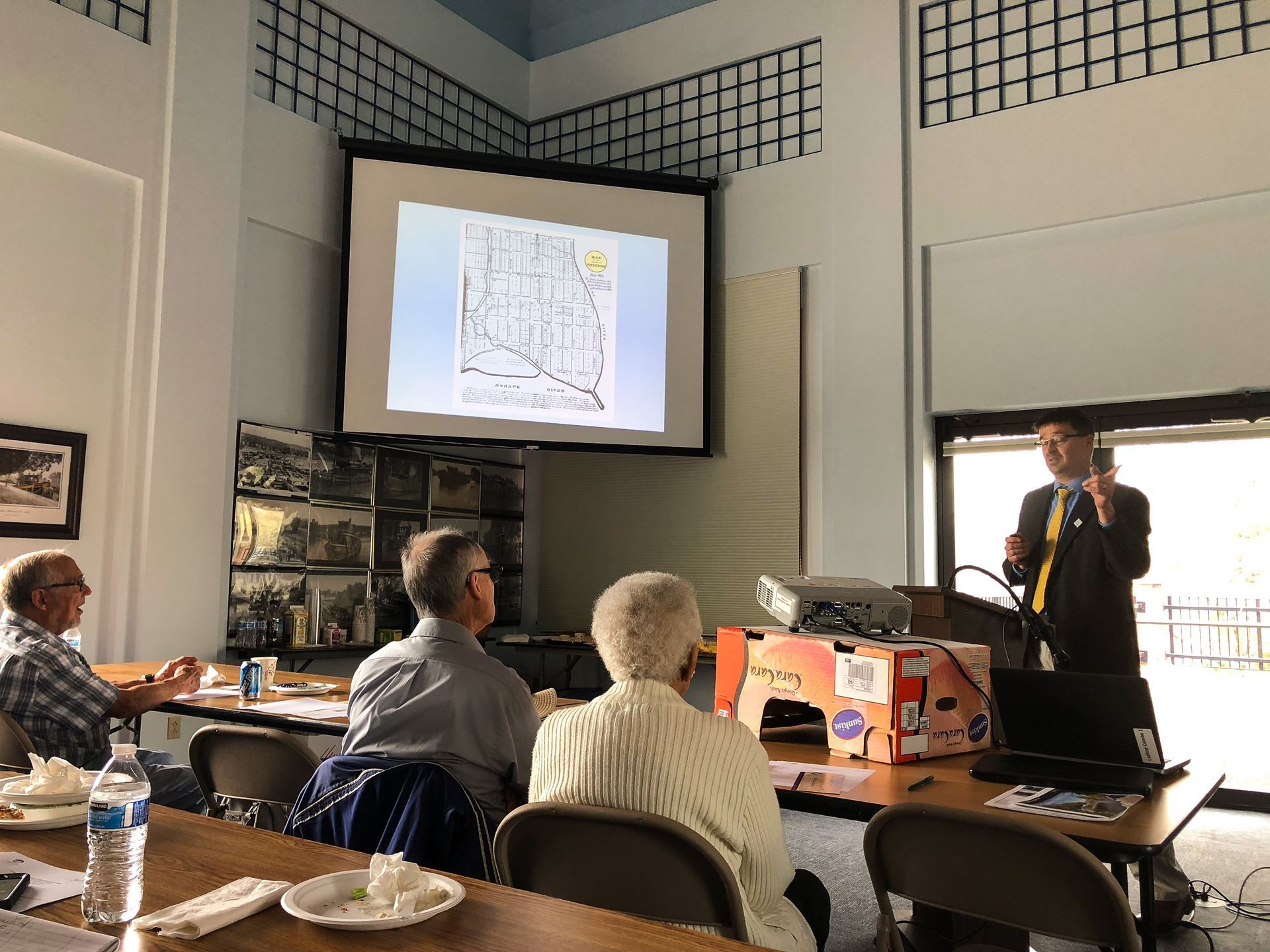Members of the Capital Region community gathered in Waterford on May 4 for the first of a series of four roundtable programs celebrating the history of the Champlain Canal and the communities who helped build it.
Organized by Lakes to Locks Passage, Inc., the programs were facilitated to not only raise awareness of the vibrant history of canals in New York, but to encourage museum professionals to collaborate with their communities and develop engaging experiences for visitors. Attendees of the Waterford workshop included local town historians, representatives from the Erie Canalway National Heritage Corridor, and Waterford history buffs.

“Community Building: The Growth of Canal Communities” was the first roundtable to kick off the series in Waterford, NY, on May 4, 2018. The program featured presentations by Brad Utter, the Senior Historian and Curator for Science and Technological History at the New York State Museum, and Russ VanDervoort, a local historian and president of the Waterford Canal and Towpath Society.
Utter, whose research and curatorial work at the New York State Museum focuses on the canal system of New York, provided attendees with a comprehensive history of the Erie and Champlain Canals. Showing photos, maps, and newspaper clippings, he explained how the need for canals across New York State had increased by the War of 1812. The state of New York wanted to trade with Western New York and towns and cities bordering the Great Lakes without British interference, Utter said, and also find a means to efficiently transport their troops across the state.

Brad Utter presenting at the first Lakes to Locks roundtable.
Pro-canal folks went as far as to claim that supporting the construction of the Champlain Canal was “patriotic,” since it would be ultimately good for the state government. Utter showed excerpts from the Champlain Canal’s Board of Commissioners’ call for Hudson Valley residents of the 19th century to support the construction—they claimed that the Champlain Canal would “enhance the value of the Northern Lands,” going as far to predict that the cities within the Capital Region would unite into one giant city because of the new canal.
While the Board’s prediction of a mega-city never did come true, their promise of value enhancement certainly did. By the mid 1800s, the Champlain Canal’s reach was significant, with trade routes stretching from Waterford to Vermont. Over 500 tons of merchandise were shipped out of Waterford after the Canal was completed. While local farmers and merchants were initially against the canal’s construction (and for good reason, since the physical toll the canal took on their land was dire in some cases), many of them learned how to work the new waterway to their advantage. Some turned to dairy and fruit farming, sending their products down the canal to Troy.
The Capital Region also saw an increase in tourism on the Canal, said Utter. Saratoga Springs unsurprisingly benefitted the most, due to the common lore which promoted the idea that the sulfurous waters had “healing properties.” This certainly caught the attention of the wealthy canal travelers, but Utter explained that canal tours were not only catered for the rich and famous. The Northern Tour opened up the floodgates for the poor and middle-class to tour the Champlain Canal—plus, they were cheaper and faster than the tours sent to Saratoga.
While the pros of the canal were plentiful, there were a few cons that Utter mentioned near the end of his presentation. The physical impact of the construction alone was enough to turn off some Hudson Valley residents, with land being commandeered by the government (in what Utter said was the first major use of imminent domain in the state), farms being split in half by new canal channels, not to mention the sudden appearance of canal robbers and an outbreak of cholera that originated in Montreal, the Champlain Canal’s northernmost pier. Despite its drawbacks, Utter said the Champlain Canal proved its worth to the region by the mid-19th century, building up the communities of towns along the canal, like Waterford.
While Utter’s presentation told the history of the Champlain Canal, VanDervoort’s recollections of his family’s life on the canal brought the event full circle. Gretel Schueller, the Community Outreach Director for the Lakes to Locks Passage, emphasized how important it is for the Passage to reach out to their community through the roundtables. “We’re telling real stories from real people,” she said.
Margaret Gibbs, the Heritage Program Director of the Lakes to Locks Passage, explained that they’re encouraging the communities of Waterford and the larger Capital Region to interact with their histories; luckily for Lakes to Locks, that’s exactly what VanDervoort has been doing since he was a child.
VanDervoort says his family has been tied up with the canal in one way or another since 1807. VanDervoort, who has published two books about his family’s history with the Champlain Canal, regaled the roundtable’s attendees with funny stories about his great-grandfather, affectionately nicknamed “Cap’n Lou,” a tugboat captain who didn’t tolerate bad behavior from his crew members (but did, on occasion, let them run ashore to have a little fun).
In between stories about his predecessors who lived in a tugboat on the canal year-round, VanDervoort showed then and now photos of the Champlain Canal. Many of the structures that could be seen in the old pictures are long gone now, but VanDervoort was reflective in showcasing the change of landscape in Waterford. He went on to talk about a local historian in the 1950s who had made it his mission to record the stories of canal community members, some of whom were VanDervoort’s family. “I can listen to stories the way they told them,” he said.
The Lakes to Locks Passage sponsored three other roundtables over the course of the month in Hudson Falls, Schuylerville, and Glens Falls. More information on Lakes to Locks can be found here.
Photos and words by Sarah Heikkinen.
